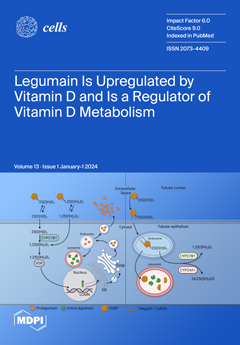High levels of alcohol intake alter brain gene expression and can produce long-lasting effects. FK506-binding protein 51 (FKBP51) encoded by
Fkbp5 is a physical and cellular stress response gene and has been associated with alcohol consumption and withdrawal severity.
Fkbp5 has been previously
[...] Read more.
High levels of alcohol intake alter brain gene expression and can produce long-lasting effects. FK506-binding protein 51 (FKBP51) encoded by
Fkbp5 is a physical and cellular stress response gene and has been associated with alcohol consumption and withdrawal severity.
Fkbp5 has been previously linked to neurite outgrowth and hippocampal morphology, sex differences in stress response, and epigenetic modification. Presently, primary cultured
Fkbp5 KO and WT mouse neurons were examined for neurite outgrowth and mitochondrial signal with and without alcohol. We found neurite specification differences between KO and WT; particularly, mesh-like morphology was observed after alcohol treatment and confirmed higher MitoTracker signal in cultured neurons of
Fkbp5 KO compared to WT at both naive and alcohol-treated conditions. Brain regions that express FKBP51 protein were identified, and hippocampus was confirmed to possess a high level of expression. RNA-seq profiling was performed using the hippocampus of naïve or alcohol-injected (2 mg EtOH/Kg) male and female
Fkbp5 KO and WT mice. Differentially expressed genes (DEGs) were identified between
Fkbp5 KO and WT at baseline and following alcohol treatment, with female comparisons possessing a higher number of DEGs than male comparisons. Pathway analysis suggested that genes affecting calcium signaling, lipid metabolism, and axon guidance were differentially expressed at naïve condition between KO and WT. Alcohol treatment significantly affected pathways and enzymes involved in biosynthesis (Keto, serine, and glycine) and signaling (dopamine and insulin receptor), and neuroprotective role. Functions related to cell morphology, cell-to-cell signaling, lipid metabolism, injury response, and post-translational modification were significantly altered due to alcohol. In summary,
Fkbp5 plays a critical role in the response to acute alcohol treatment by altering metabolism and signaling-related genes.
Full article






